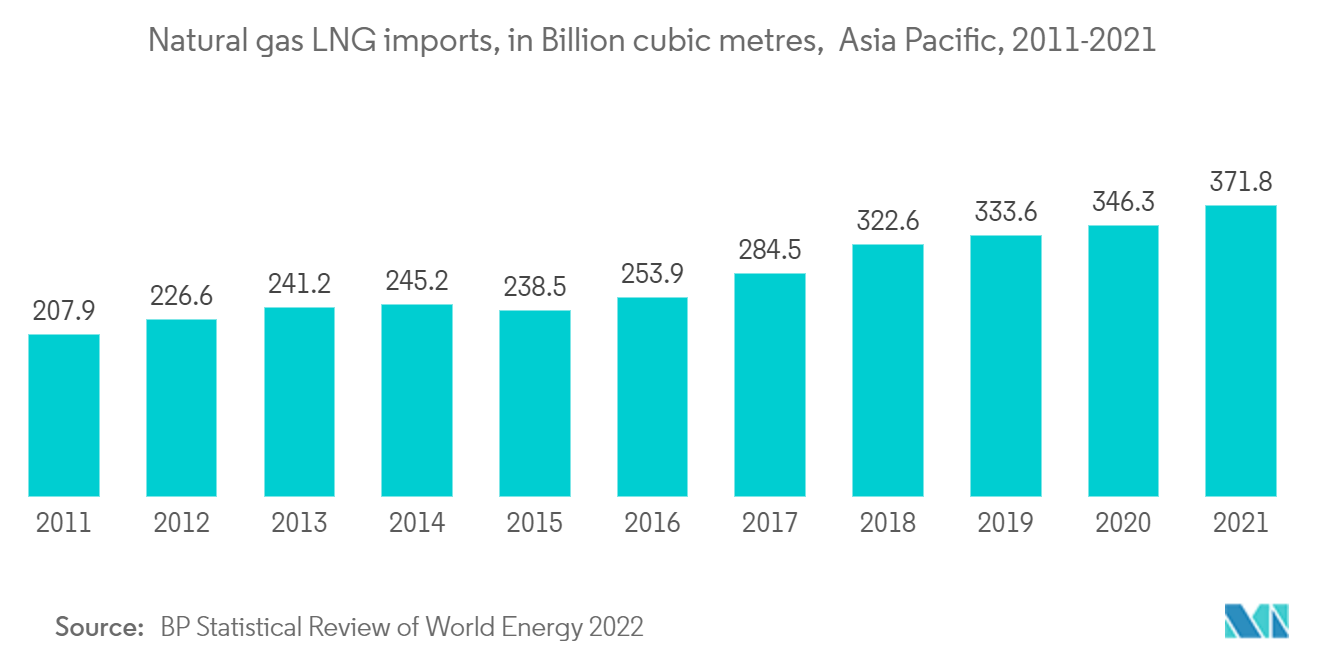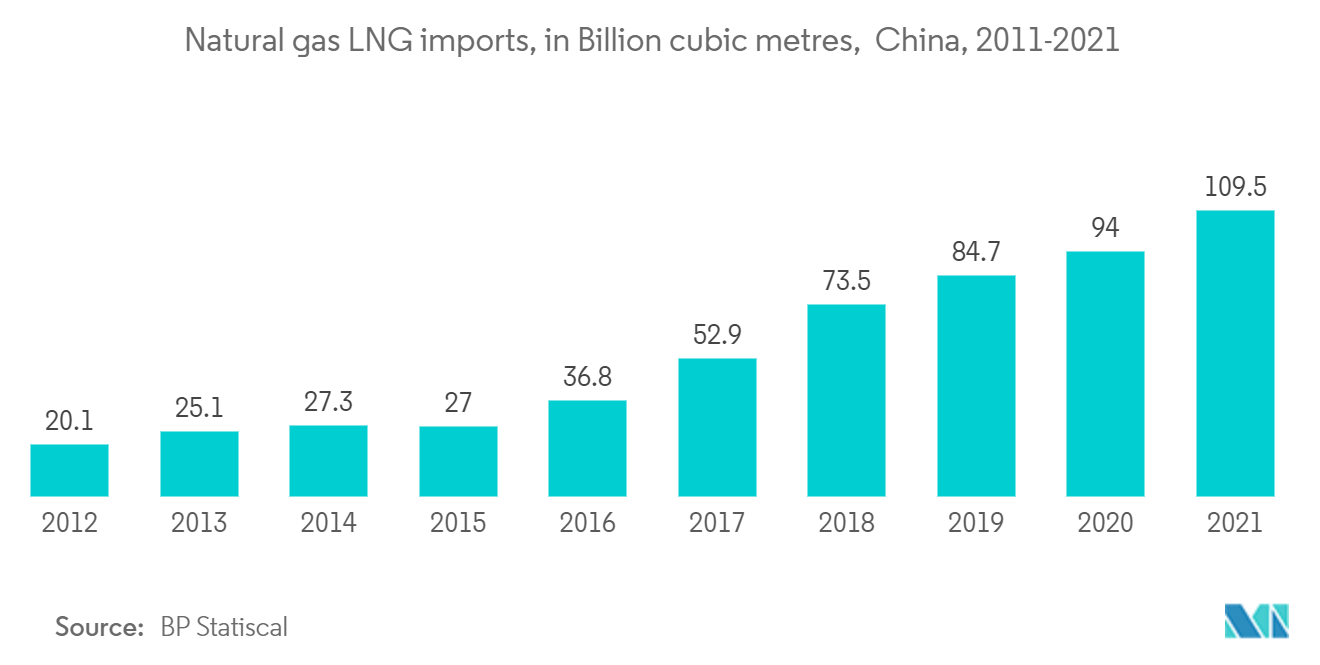Market Trends of Asia Pacific LNG Infrastructure Industry
This section covers the major market trends shaping the APAC LNG infrastructure Market according to our research experts:
Regasification terminal Segment to have a Significant Share in the Market
- The regasification terminal segment is expected to have a significant market share during the forecast period. Regasification terminals cover nearly 67% of the total global LNG terminal capacity, with maximum terminal capacity terminals in Asia-Pacific.
- Gas can be transported as liquified natural gas for long-distance transport or in situations without access to natural gas pipes. Due to its volume being reduced by around 600 times compared to a gaseous state, natural gas is frequently transported and stored in a liquid form. The gas condenses and turns into a liquid when it is cooled to about -162°C. Regasification is the process of heating a liquified gas to return it to its gaseous condition.
- Many city gas distribution companies in India plan to develop CNG or satellite stations. Moreover, the Government of India plans to add fueling stations along its 6,000-km-long golden quadrilateral highways to build an effective ecosystem for LNG-fueled vehicles. This will likely increase the demand for LNG regasification terminals to ensure an uninterrupted gas supply for transportation applications.
- Natural gas LNG importr in Asia pacific grew from 226.6 billion cubic metres in 2012 to 371.8 billion cubic metres in 2021, a 6% increases.
- Hence, owing to the above points, increasing investment in LNG infrastructure will drive the market during the forecast period.

China fastest growing region in the LNG infrastructure market
- In 2021, China is one of the major countries in the world, which led to the growth in LNG demand. In 2020, there were about 94 billion cubic metres tons of natural gas LNG imported; in 2021, there were 109.5 billion cubic metres tons. China surpassed Japan to become the world's biggest LNG importer as a result of this spike in demand. Due to Chinese LNG purchasers signing long-term contracts for more than 20 million tons annually, demand has surged.
- Increasing demand for LNG is from industrial, residential, and power generation sectors, with the highest potential in the transportation sector. In 2020, China had around 113 thousand units of LNG trucks. With a growing focus on having an alternate low carbon emission fuel for heavy truck transportation, LNG as a fuel would be the best substitute for diesel-fueled engines. Growth in the number of LNG trucks due to the higher price of diesel, as compared to natural gas, and increasing investment in LNG infrastructure will drive the market during the forecast period.
- In December 2021, Pavilion Energy, a Singapore-based energy solutions provider, and Zhejiang Hangjiaxin Clean Energy entered a deal to supply a small-scale LNG under which the former company is expected to provide 0.5 million tons per year of LNG to Hangjiaxin from 2023.
- With the increasing adoption of natural gas over coal for power generation, prominent players and small power project companies with no access to remote locations or pipeline facilities are expected to import LNG. They have been showing interest by investing in LNG facilities. The LNG receiving terminals in China are expected to increase with the growing share of LNG in the power sector. Several small power plants near the Yangtze River import LNG directly from small vessels and use them for power generation. China is anticipated to import about 25 MTPA of LNG by 2030.
- Natural gas LNG imported in China from 2012 to 2021 is 20.1 billion cubic metres to 109.5 billion cubic metres i.e 20.6% increases.
- Hence, owing to the above points, China is expected to see significant growth in the LNG infrastructure market during the forecast period.

